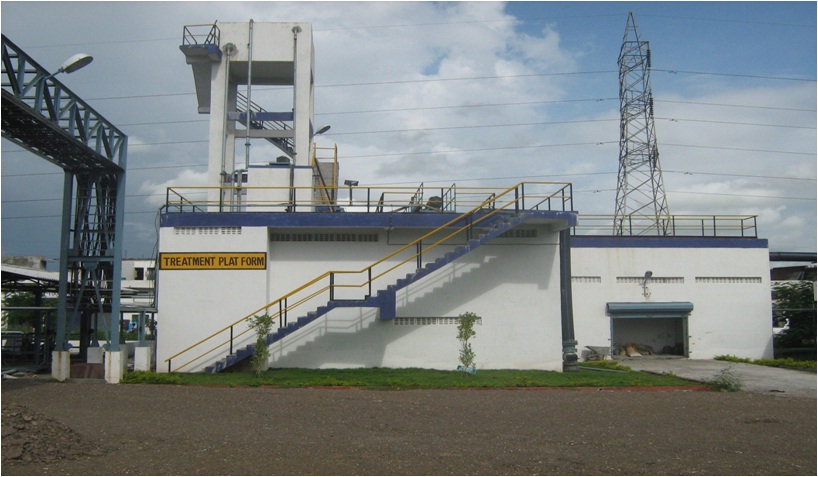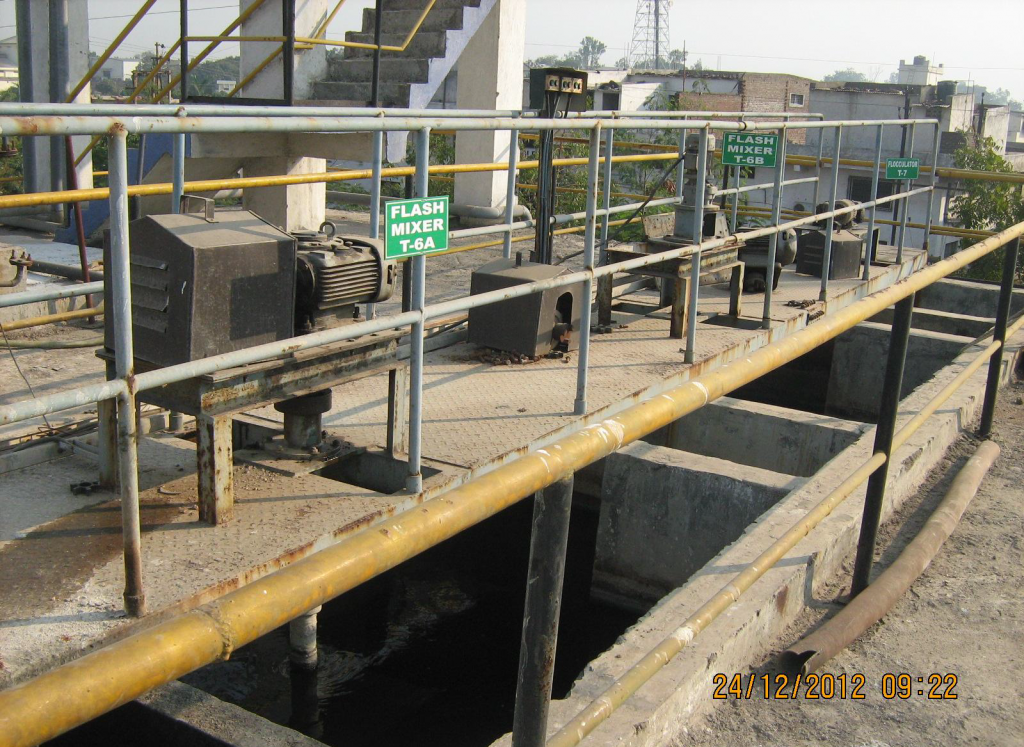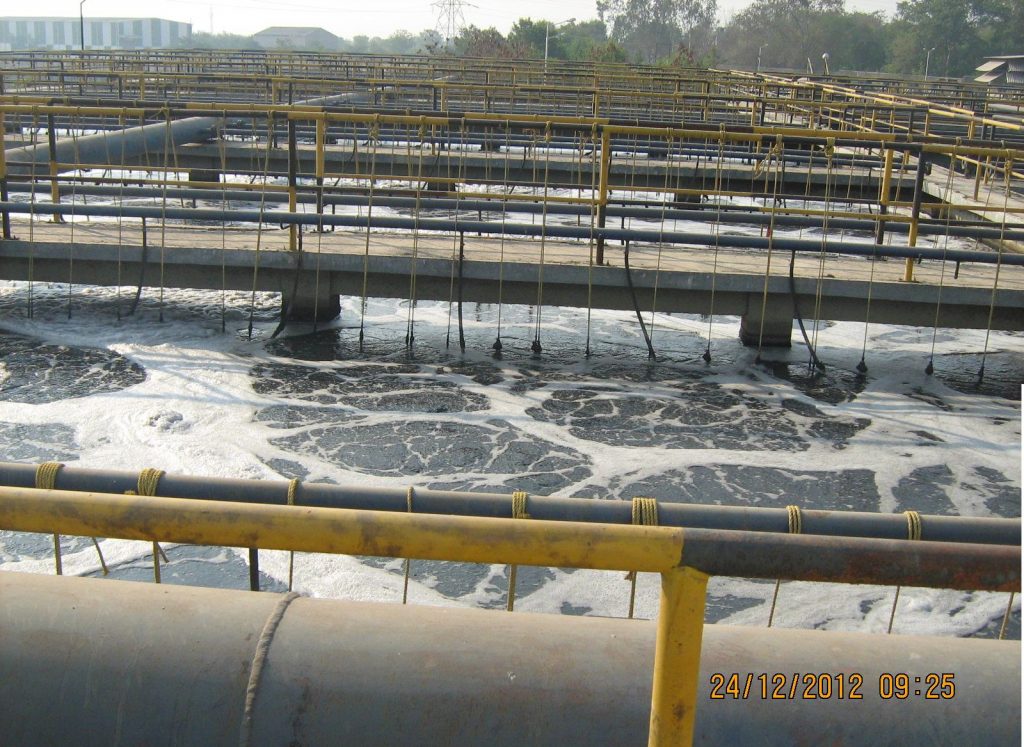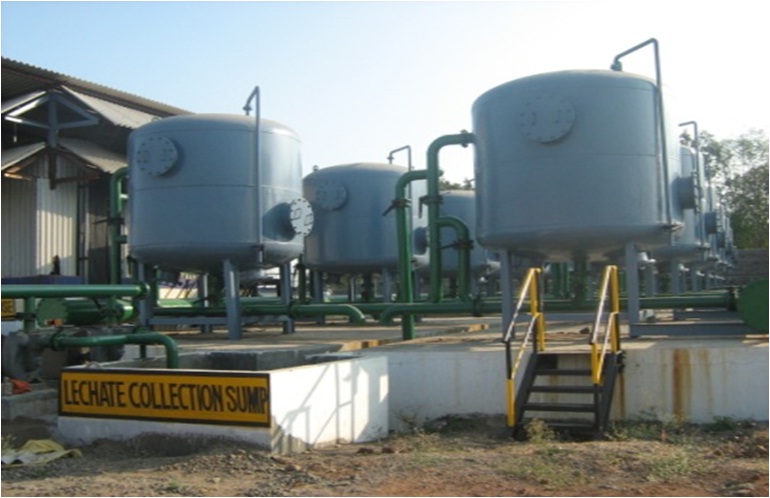Treatment Facility at CETP
In Waluj Industrial Area different type of small, medium and large scale industries are located. The major part of the waste water generated is from large Breweries & Pharmaceuticals, Electroplating, Small number of Engineering, Food processing industries. Data of waste water generation and its quality as well as performance of existing effluent treatment plants for similar waste indicates that waste is suitable for biodegradation and hence a treatment scheme based on conventional Biological Degradation of waste water is included. In addition to take care of incoming concentration of suspended solids physicochemical treatment followed by clarification treatment is included. After biological treatment to meet the final discharge norms tertiary treatment having pressure sand filter, activated carbon filter and chlorination treatment is also included in the treatment scheme. The brief process description is as given below.

Physico- chemical treatment

The waste water is received at waste water collection sump at CETP battery limit. From here waste water is transferred using Raw Effluent Transfer Pump to physico-chemical treatment section of the CETP. Hence effluent is given treatment with lime solution in flash mixer to raise pH of the effluent to 8.0 & also with ferric alum. Effluent from flash mixer is taken to flocculator where again ferric alum is added for flocculation and coagulation of suspended and precipitated particles. From flocculator effluent is passing through reaction channel where suitable polyelectrolyte is added to increase settling rate of flocculated and coagulated mass.
From reaction channel effluent is feed to tube deck type hopper bottom lamella clarifier for the separation of precipitated solids from the waste water by settling under gravity. Tube deck packing provides high surface to volume ratio for settling under gravity. Clear overflow from primary clarifier is conveyed to aeration tank for biological treatment. Settling sludge at the bottom of the primary clarifier is transferred to primary sludge tank and further to filter press for getting cake of the sludge.
Biological Treatment
Activated sludge process is selected for biological treatment of effluent. Here, soluble BOD is stabilized by oxidation of organic matter by microorganisms are supplied with oxygen and nutrients necessary for their metabolism. Microorganisms are supplied with oxygen and nutrients necessary for their metabolism. Oxygen required is provided by air blower through non-clog type membrane diffusers to achieve higher rate of oxygen transfer efficiency. Mixed liquor overflow from aeration tank is taken to secondary clarification process for the separation of microorganisms from treated waste water under gravity. Bottom sludge from secondary clarifier is returned back to aeration tank and recycle ratio is decided based on the design MLVSS level in the aeration tank. Excess biomass is discharged through sludge handling system. Nutrient (DAP & Urea) is additionally fed to aeration tank from respective tanks.
As mentioned above mixed liquor from aeration tank is taken in to secondary clarification process for the separation of bio-mass from treated effluent under gravity. For secondary clarification, Tube-deck type hopper bottom lamella clarifier is installed. Tube deck packing provides high surface to volume ratio for settling under gravity. Part of the settled biomass from the secondary clarifier is recycled back in to aeration tank and excess bio mass is transferred into secondary sludge tank.

Tertiary Treatment

Biologically treated effluent from the clear water tank is further treated in pressure sand filter (PSF) and activated carbon filter (ACF) for removal of fine suspended solids, colour and odour from the effluent. Finally, effluent is collected in treated water tank and finally discharged for green belt development




